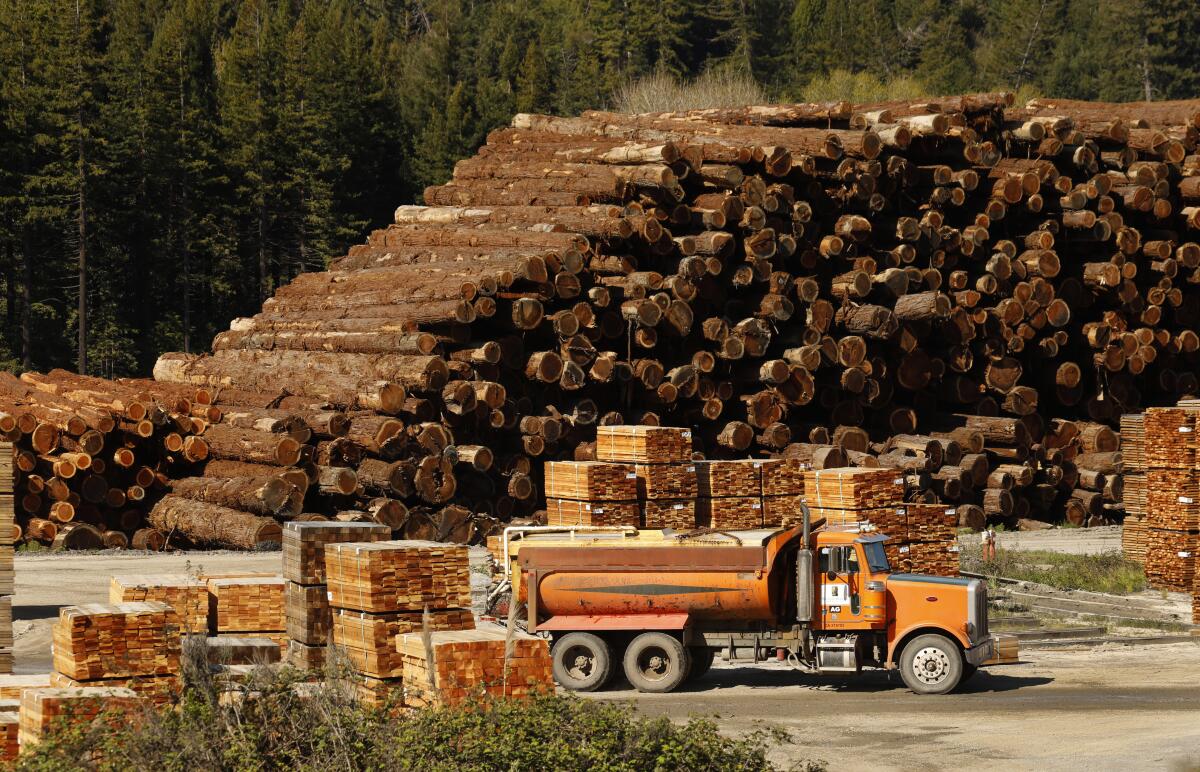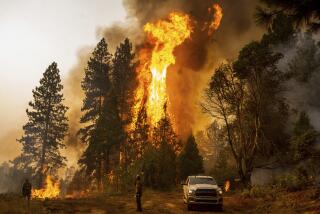Future demand for wood will undermine efforts to reduce global greenhouse gas emissions

- Share via
With the harvesting of wood expected to increase dramatically in coming decades, researchers are warning that policy officials have woefully underestimated logging’s carbon footprint — and that the widespread felling of trees will undermine efforts to reduce planet-warming emissions.
Between 2010 and 2050, global demand for wood is expected to surge 54% as more trees are used for fuel and for the manufacturing of buildings, furniture and paper products, according to a study published this week in the journal Nature.
During that time, greenhouse gas emissions from wood harvests would significantly increase, likely releasing 3.5 billion to 4.2 billion metric tons of carbon dioxide each year — three times more than what’s emitted annually by the global aviation industry, say researchers at the World Resources Institute.
Study authors say their analysis has revealed a massive accounting gap in global greenhouse gas production. Because carbon emissions from logging are rarely counted by policymakers, the increase will upend efforts to reduce the industry’s carbon footprint.
“Vast emissions from harvesting wood have mostly been ignored because of faulty carbon accounting,” said Tim Searchinger, one of the study authors and the technical director for Agriculture, Forestry and Ecosystems at the World Resources Institute. “In these areas, most papers have treated the additional harvest of wood as having no climate effect.”
Pollution from cooking with a gas stove may be on par with breathing secondhand tobacco smoke, according to new research.
Globally, trees store a tremendous amount of carbon in their trunks, branches and roots. When they are cut down, the stored carbon can be released over time, or rapidly if the wood is burned. By midcentury, humans are expected to raze about 3 million square miles of forestland — an area roughly equivalent to the size of the continental U.S.
Study authors say the forest cutting will be driven by an almost 130% increase in demand for paper products and nearly 70% increase in demand for furniture, flooring and other timber products. Demand for wood that can be burned for fuel — by far the most popular use — is poised to increase by 22%.
Researchers argue these emissions could be significantly reduced if people use less wood for heat and cooking. “If new wood harvests could be reduced, forests would grow even more overall, absorb even more carbon and reduce global warming more,” Searchinger said.
In California, where 27% of the state’s landmass is forested, the research highlights the importance of protecting state forests from human activity — particularly at a time when state forestry managers are scrambling to save trees from intensifying wildfire, prolonged drought and damaging pests.
Although the tracking of emissions from wood harvests remains rare, the California Air Resources Board is one of the few government agencies that has conducted an analysis to model how logging, tree mortality and new development might contribute to global warming.
Its analysis found the amount of carbon stored in California forests is projected to decline over 8% by 2045, mostly as more trees die from drought, excessive heat and wildfire.
Around 38.5 million California residents live in a county that received a failing grade in the Lung Assn.’s annual “State of the Air” report.
California’s climate plan actually calls for smaller trees to be cut down in order to create less dense forests, which are less susceptible to wildfire. This process, called forest thinning, is expected to result in some carbon losses initially, but state officials hope it will eventually allow for more spacing between trees and less competition so that larger trees might sequester more carbon over time.
Many local air districts have also offered incentives to replace wood-burning appliances, not only for the climate benefits, but also to reduce lung-damaging air pollution.
A significant amount of wood is also burned and essentially wasted in manufacturing processes such as making paper. Mitigating that waste could significantly drive down emissions.
“There are lots of things that we know aren’t the best for the environment, but we need to live,” Searchinger said. “This study doesn’t say the wood products industry is evil. It just says, they’re like any other industry, they have serious emissions and we need to try to reduce them.”
More to Read
Toward a more sustainable California
Get Boiling Point, our newsletter exploring climate change, energy and the environment, and become part of the conversation — and the solution.
You may occasionally receive promotional content from the Los Angeles Times.











